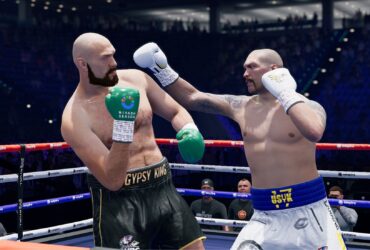Developer Warhorse Studios returns imminently with Kingdom Come: Deliverance 2, the next chapter in its historical RPG built on CryEngine technology. This time around, we’re looking at a purely current-gen release on Xbox Series X, Series S, PlayStation 5, and of course PS5 Pro. In putting the last-gen PS4 and Xbox One systems aside, the team is able to focus its efforts on optimising for a beautiful recreation of an early 15th century Czech Republic on these four platforms and PC, of course. First impressions from the area of the game set aside for the preview period certainly impress – and it was a genuine surprise to see a 60fps performance mode added to the mix, bearing in mind how CPU-intensive the first game was.
The ambition of KCD2 is unlike most games and it’s certainly unusual in the portfolio of CryEngine titles. Following directly on from the original, it once again puts us in the shoes of Henry, a former blacksmith apprentice who navigates the political turmoil across the Kingdom of Bohemia. Kicking off with an ill-fated mission to deliver a peace letter, you’re faced with branching dialogue trees, during which the success of each interaction is dictated by your stats. Stealth, combat, or the full charm offensive are all viable ways to push the story forward here. Also, en route you are encouraged to play out the realities of 15th century living, including transporting sacks of food for coin, blacksmithing, and even brewing your own potions. The first person duelling system returns, but it’s not a high-octane, action thrill-ride, nor is it meant to be. There’s a slower, more considered pace to KCD2 that pushes it more-so into immersive sim territory than most RPGs going today. Fatigue, hunger, your wounds are all simulated as you travel the map, and added to that, your attire, plus your stats dictate the outcome of a discussion.
On a tech level, the highlights of the first Kingdom Come: Deliverance are only amplified in scale this time around. Above all else, the rendering of huge, dense woodland areas is the standout point; from PS5 Pro to Xbox Series S, every console is able to realise these broad, sweeping landscapes – backed by dynamic weather and time of day systems. It truly grounds it in its historical premise, and also the often methodical, sim-based nature of its gameplay. Grass and tree pop-in are in view, sadly, but what Warhorse Studio achieves on CryEngine takes on a suitably photo-realistic look otherwise – largely thanks to the use of physically based materials. Everything from the metals on armour to the cloth on horse saddles reacts convincingly to the overcast midday lighting outdoors. And meanwhile, the use of the CryEngine’s sparse voxel octree global illumination (SVOGI) allows for convincing indirect light bounce, notably around interiors lit by torches.
The standard PS5 and Xbox Series X offer two modes: a 30 frames per second fidelity mode that renders at 1440p, and also a 60fps performance mode that renders at 1080p. Each uses AMD’s FSR 2.1.2 technology (with FSR 3.1 on PC) to scale to a higher 4K image. Meanwhile, Xbox Series S runs at 1080p and 30fps out of the box, with no alternative 60fps option available. And finally, PS5 Pro also removes the mode toggle in the menus, instead opting to offer a single way to play at 60fps – rendering internally at 1296p with a PSSR upscale to 4K.
On PS5 and Series X, the fidelity mode boosts foliage and shadow draw across terrain over the performance mode. Outdoor scenes are more fully fleshed out on the 30fps fidelity mode as a result, which also reduces the visibility of pop-in. Added to that, the fidelity mode improves the quality of ambient occlusion, notably around interior details like hanging plants – while the object geometry setting is boosted as well. Factoring in its superior image quality, via a 1440p base resolution, there’s a trade-off to consider when using the 30fps mode on PS5, and Series X.
So what’s the PS5 Pro advantage? The good news is that all of these fidelity mode extras engage by default: there are improved tree and shadow LODs, ambient occlusion and object quality – and it all runs at 60fps rather than 30fps, essentially living up to Mark Cerny’s original pitch for the PS5 Pro, in removing the burden of choice between two modes to give one singular option that does it all. Compared to the base PS5’s performance mode, PS5 Pro’s use of PSSR – using 1296p as a base resolution – also boosts image quality all round. The result is sharper, often better defining the fine detail on distant grass ahead, or even the individual strands of the horse’s mane. Even compared to the fidelity mode it holds up well: the only catch being that there is a slight increase in temporal flicker compared to the base PS5’s FSR approach. Otherwise, the move to the more expensive PSSR pays off in generating a convincing enough 4K image, while also keeping 60fps and all those fidelity mode extras in view.
Meanwhile, Xbox Series S only runs at 30fps and at a native 1080p that does not rely on any variation of FSR to upscale it. In effect, this means the game renders at 1080p on Series S, with a conventional upscale if you’re outputting to a 4K display. It’s disappointing, and the result is blurrier than, for example, the 1080p 60fps performance modes on PS5 and Series X – and certainly a step down next to their 1440p 30fps fidelity modes in clarity. A few other downgrades bear mention too: firstly Series S runs with lower quality shadows, while textures take a hit in quality up close. Likewise, alpha effects – like fire – drop a setting while in outdoor scenes, while there’s more abundant tree and shadow pop-in on the 4TF machine.
The PS5 and Series X fidelity modes aren’t problem-free by any means by comparison: all share a similar 15fps refresh on shadows past a certain range – notably beneath the horses ahead of the player on an early route to Trosky castle. Also, Series X’s fidelity mode suffers from what appears to be a settings bug, causing foliage draw to run at a notch below PS5, and even Series S. Ideally, this would be addressed by release, but fundamentally, the Series S version has the deepest cutbacks in its shadows, textures and pop in.
Switching to frame-rate testing, PS5 and Xbox Series X’s performance modes each hit the target 60fps a majority of the time. It’s not a faultless delivery, but the drop to 1080p for this mode does pay off in a convincingly robust experience. It’s good news, too, that PS5 Pro hands in a broadly equivalent experience in hitting that 60fps line on its default mode. Xbox Series X typically runs on par with PS5 but later stress points do reveal the Microsoft machine suffering greater and more consistent drops under 60fps by comparison. An early stealth segment in the swamps, for example, has Series X drop into the 50-60fps range, while base PS5 and PS5 Pro tend to keep their heads above water at 60fps. Perhaps more tellingly, a dream sequence puts all three consoles through their paces, where again Series X takes the biggest drops to the 50fps line. Base PS5 comes out with the smoother, closer lock at 60fps, while PS5 Pro falls in between the two.
| Xbox Series S | PS5/Series X Fidelity | PS5/Series X Performance | PS5 Pro | |
|---|---|---|---|---|
| Native Resolution | 1920×1080 | 2560×1440 | 1920×1080 | 2304×1296 |
| Frame-Rate Target | 30FPS | 30FPS | 60FPS (VRR Unlocked) | 60FPS (VRR Unlocked) |
| Upscaler | N/A | FSR 2.1.2 to 4K | AMD FSR 2.1.2 to 1440p | PSSR to 4K |
As a nice value-added feature, those playing on 120Hz displays with VRR enabled have access to an entirely unlocked frame-rate in KCD2. Simply select the performance mode, and PS5, PS5 Pro and Series X all rise above the 60fps line where GPU headroom allows it. In effect, this allows us to better split the three in performance, where the 60fps cap would hide the differential otherwise. Base PS5 produces the best frame-rate overall, with a margin of +5-8fps over the PS5 Pro in matching scenes, which in itself hovers at around a frame on average above Series X. This advantage over Pro hardware might seem surprising on first glance, but it’s not a precise match in rendering load between them. The newer PS5 model is pushing visuals equivalent to the fidelity mode settings in draw distances, AO and object quality, while crucially deploying the more expensive PSSR upscaling to 4K. I’d suggest PS5 Pro users are still getting a reasonable balance between visuals and frame-rate here – especially in using VRR – even if there’s a performance deficit next to the base PS5.
The easy recommendation is to use the 60fps performance mode on all three consoles, though the 30fps fidelity mode is a welcome extra option. PS5 hits the 30fps line with little issue this way, giving us a stable line despite the jump to 1440p, while those boosted settings help sweeten the deal. The biggest drawback is the loss in input responsiveness, with an obvious delay in every action while running at 30fps. As far as PS5 is concerned otherwise, it is stable – and once again, often more-so than the Xbox consoles. By comparison, Series X often runs perfectly with 30fps as the target, though there are instances, like an early spot while foraging for herbs, where it lurches into the mid-20s. It’s another sign that Series X is currently lagging behind in optimisation, but again, most of play hits the mark. Meanwhile, Series S has more frequent drops to the 20s. Typically it still holds at 30fps a majority of the time, but the regularity of drops when facing dense jungle spots is higher. It’s a shame given the cutbacks elsewhere on Series S – and that there’s no alternative mode to switch to which could improve matters.
Seven years on since the original game, our first look at Kingdom Come: Deliverance 2 suggests that its ambition fits the capabilities of each modern console well. Perhaps its greatest success is in offering a viable 60 frames per second option on PS5, PS5 Pro and Series X – while also letting us go above that on supporting VRR displays. It’s also heartening to see that PS5 Pro’s extra horsepower, plus PSSR upscaling technology, are well utilised in this case. The result for Pro users is a smart fusion of PS5‘s performance and fidelity modes, combining 60fps gameplay and higher visual settings. It gives us a hassle-free way to enjoy the game with no need to trial two graphics options first. On the flipside, Xbox Series S is facing more obvious cutbacks: the fixed 30fps is a disappointment, as are the dropped visual settings. In the run-up to the game’s 4th February release, it’s the only platform where I’m hoping to see improvement, where the other three consoles hand in a much more worthy take on Warhorse Studio’s long-gestating sequel.
fbq('init', '560747571485047');
fbq('track', 'PageView'); window.facebookPixelsDone = true;
window.dispatchEvent(new Event('BrockmanFacebookPixelsEnabled')); }
window.addEventListener('BrockmanTargetingCookiesAllowed', appendFacebookPixels);





![Date Everything Reveals New Character Dante the Fireplace [EXCLUSIVE]](https://esportvoice.com/wp-content/uploads/2025/02/Date-Everything-Reveals-New-Character-Dante-the-Fireplace-EXCLUSIVE-280x210.jpg)






Leave a Reply